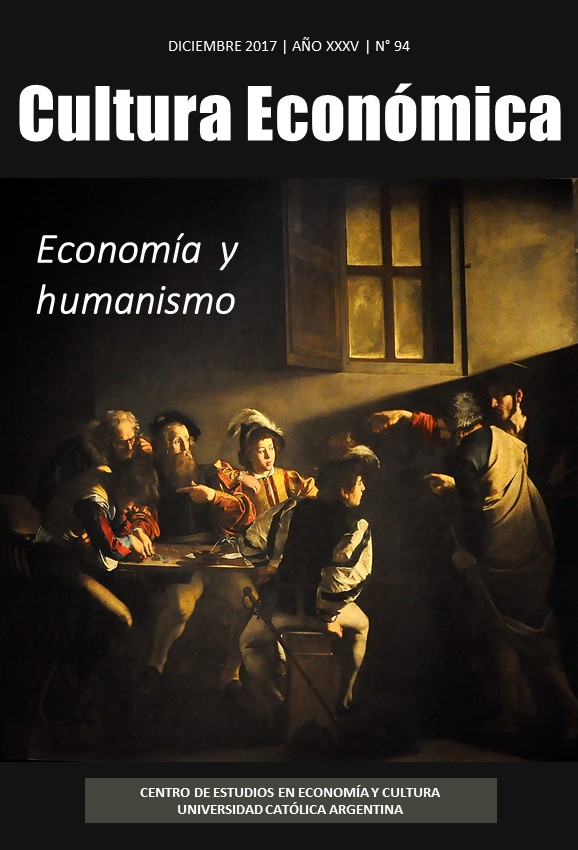Two Different Visions of Rationality in Economics
Keywords:
ECONOMIC THEORY, ANTHROPOLOGY, RATIONALITY, FREEDOM, SOCIABILITYAbstract
The author shows the existing contrast between two conceptions on rationality, which are the grounds on which economic theory is build. The first one is based upon the idea that there is an essential animal dimension in humans, and leads to a realistic economic theory. On the other hand, the second notion ignores the animal sphere and turns human beings into a mere advantages calculator without purpose, and economic theory into a theory of price.Downloads
References
Allais, Maurice (1953). “Le comportment de l´homme rationel devant le risque: a critique des postulats et axiomes de l´ecole americaine”, en Econometrica, 21 (4): 503-543.
Bicchieri, Christina (1988). “Two Kinds of Racionality” en De Marchi, Neil (ed.), The Popperian legacy in economics: papers presented at a symposium in Amsterdam. Cambridge University Press, Cambridge.
Cudd, Ann E. (1993). “Game Theory and the History of Ideas about Rationality,” en Economics and Philosophy, 9:101133.
Giocoli, Nicola (2003). Modeling Rational Agents. From Interwar Economics to Early Modern Game Theory. Edward Elgar, Cheltenham.
Hollis, Martin (1985). “The emperor’s newest clothes”, en Economics and Philosophy, 1:128-133.
MacIntyre, Alasdair (1999). Dependent Rationals Animals. Carus Publishing Company, Chicago.
Mirowski, Philip (2002). Machine Dreams Economics Becomes a Cyborg Science. Cambridge University Press, Cambridge.
Sen, Amartya (1976). “Rational fools: a critique of the behavioralist foundations of economic theory,” en Philosophy and Public Affairs, 6:317-44.
Taylor, Charles (1990). “Rationality,” en Hollis, Martin and Lukes, Steven (eds). Rationality and relativism. Blackwell, Oxford
Downloads
Published
How to Cite
Issue
Section
License













